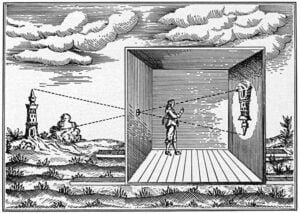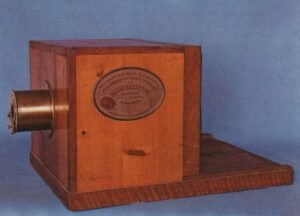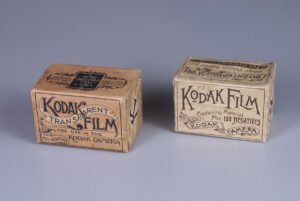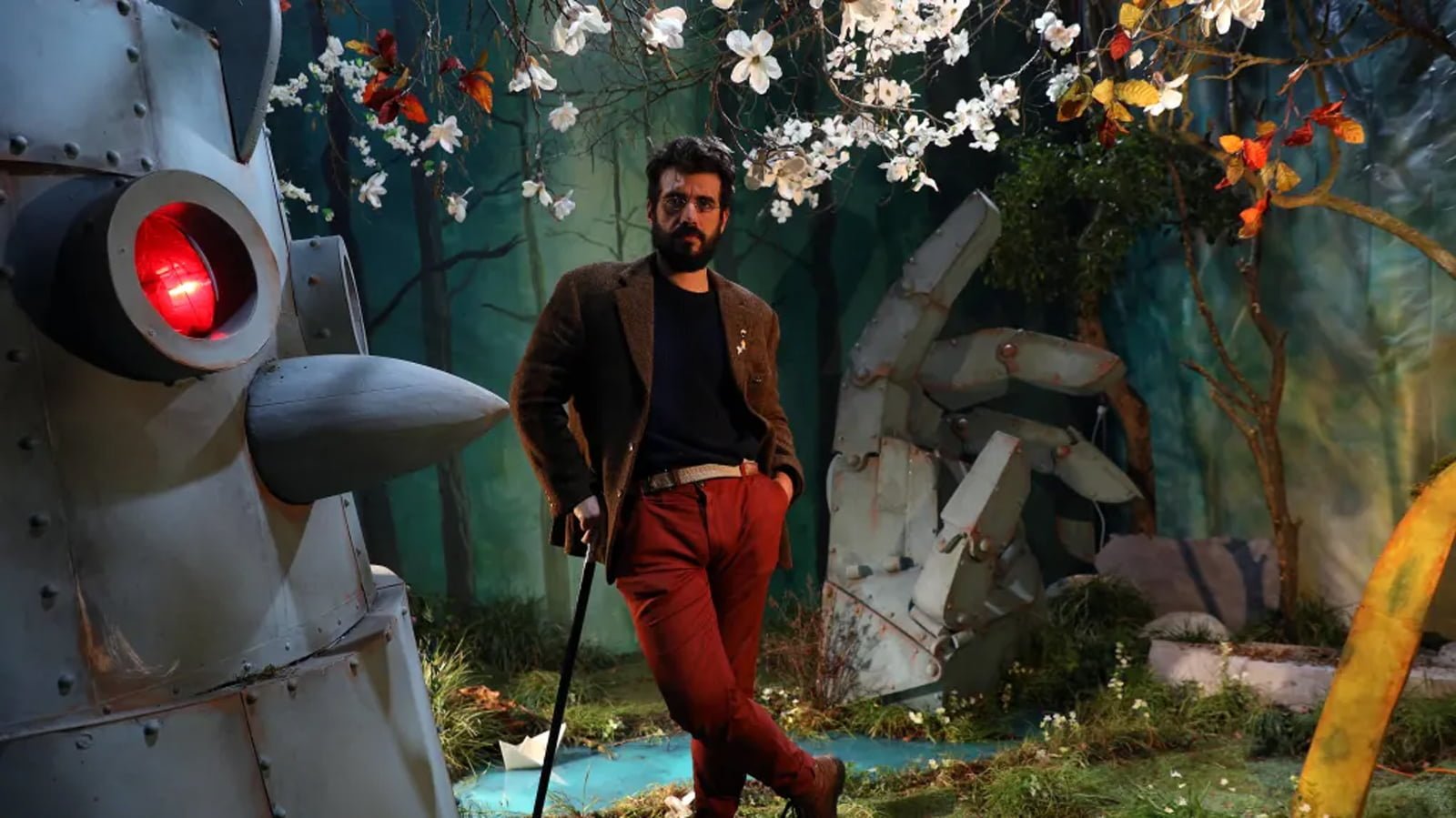The beginnings of photography
Photography is an invention that has revolutionized the way we see and capture the world around us. In this article you will discover the history of photography. The inventors, the different processes… The beginnings of photography date back to the 19th century, with the invention of the camera obscura.
The camera obscura
The principle
The camera obscura, also known as the darkroom, is an optical device that has played a crucial role in the evolution of photography. Its principle is based on the projection of an inverted image on a flat surface, such as a screen or a sheet of paper.
The idea behind the camera obscura dates back to Antiquity, but it was in the 16th century that this technique was used more systematically. At that time, artists used a darkroom to draw the contours of a subject on a canvas, based on the projected image.
The operation
The operation of the camera obscura is quite simple. Just have a dark room with a small hole on one of the walls. The outside light penetrates through this hole and projects an inverted image on the opposite surface. The smaller the hole, the sharper the image will be, but less bright.
The camera obscura was the predecessor of the modern camera. It made it possible to understand the basic principles of image formation and paved the way for the invention of photography. The first obscura cameras were portable rooms. But over time, they have been miniaturized to become the cameras we know today.
Nowadays
Today, the camera obscura is often used as an educational tool to explain the basic principles of photography. It makes it possible to concretely visualize the formation of images and to understand how light is used to capture precious moments.
In conclusion, the camera obscura is a fascinating optical device that has played an essential role in the development of photography. Its principle of projecting an inverted image made it possible to understand the basics of image formation and paved the way for the invention of the modern camera.

Principle of the camera obscura
Daguerreotype: invention and principle in photography
The principle
The daguerreotype is a photography technique that was invented in the 19th century by Louis Daguerre. This is one of the first methods of capturing images permanently. The principle of the daguerreotype is based on the use of a copper plate covered with a thin layer of silver.
The operation
To take a photograph with a daguerreotype, the copper plate must first be carefully polished. Then, this plate is exposed to light for a while, usually a few minutes. During this exhibition, the image is gradually formed on the plate.
Once the exposure is completed, the plate is treated with mercury vapors, which makes the image visible. Then, the plate is fixed with a table salt solution to preserve the image of oxidation.
The final result is a unique and detailed image, with a great depth of field. However, the process of making a daguerreotype was long and complex, making this technique difficult for the general public to use.
The daguerreotype, an important role
Despite this, the daguerreotype has played an important role in the history of photography. It paved the way for many other techniques and allowed the first photographers to explore the possibilities of this new art.
Today, the daguerreotype is considered a historical curiosity, but it remains a valuable testimony to the evolution of photography.

The daguerreotype chamber
The evolution of technology in photography
The real revolution of photography occurred in the 19th century with the invention of silver photography. The first cameras made it possible to capture images on glass plates coated with a photosensitive substance, such as wet collodion.
Over the years, many inventors have contributed to the improvement of photographic technology. George Eastman, founder of the Kodak company, invented the roll film. This has made photography more accessible to the general public.
He patented his invention in 1884. The roll film was composed of a flexible base covered with a photosensitive emulsion, which allowed photographers to capture several images without having to constantly change plates.
This invention has made photography more accessible and practical for amateurs and professionals. The film rolls were easy to carry and load in the cameras, which allowed photographers to capture precious moments with ease.
Roll film has also opened up new creative possibilities for photographers. They could now take series of photos without having to stop to change plates, which made it possible to capture movements and actions in real time.
With the advent of digital technology, the roll film has gradually been replaced by memory cards and image sensors. However, his legacy persists in the photography industry. Many photographers continue to use roll film for its unique and nostalgic aesthetic.
The invention of roll-in camera film has revolutionized the photography industry by making the process more accessible, practical and creative. It has paved the way for new possibilities and has marked the history of photography.

The first Kodak films
The arrival of digital cameras
The digital camera has become an essential tool in our modern society. But did you know that its beginnings go back several decades?
The beginnings
It all started in the 1970s, when the first prototypes of digital cameras were developed by researchers and engineers. At the time, these devices were still very experimental and only produced images of poor quality.
It was not until the 1980s that the first consumer digital cameras appeared. These models were still very expensive and reserved for photography professionals. However, they have paved the way for a new era of photography.
The democratization of digital technology
The 1990s were marked by significant advances in digital camera technology. Manufacturers have managed to reduce their size and improve their resolution. This has made these devices more accessible to the general public.
Today, digital cameras have become compact, light and affordable for most consumers. They offer exceptional image quality and many advanced features, such as image stabilization, face detection and wireless connectivity.
In conclusion, the beginnings of the digital camera were modest, but over the years, this technology has evolved rapidly and revolutionized the world of photography. Today, we can no longer imagine our life without these wonderful devices that capture our most precious memories.

The return of the film fashion
Despite the rise of digital photography, many photographers and art lovers have rediscovered the charm of film photography. Film photography offers a unique aesthetic, with its grains, colors and particular rendering.
In addition, some consider film photography as a return to the very essence of photography, taking the time to compose each image and being limited by the number of possible shots on a film.
The future of digital photography
As technology continues to progress, the future of digital photography is promising. Cameras are becoming more and more sophisticated, offering advanced features such as image stabilization. But also facial recognition and augmented reality.
New image formats, such as panoramic photography and 360-degree photography. This also offers new creative possibilities. Mobile photography is also booming, with the quality of cameras integrated into smartphones constantly improving but they will not replace a real camera…
Conclusion
In conclusion, the history of photography is a story of passion, innovation and evolution. From the modest beginnings of camera obscura to the advent of digital photography, photography has captured the precious moments of our lives and allowed us to share them with the whole world.
